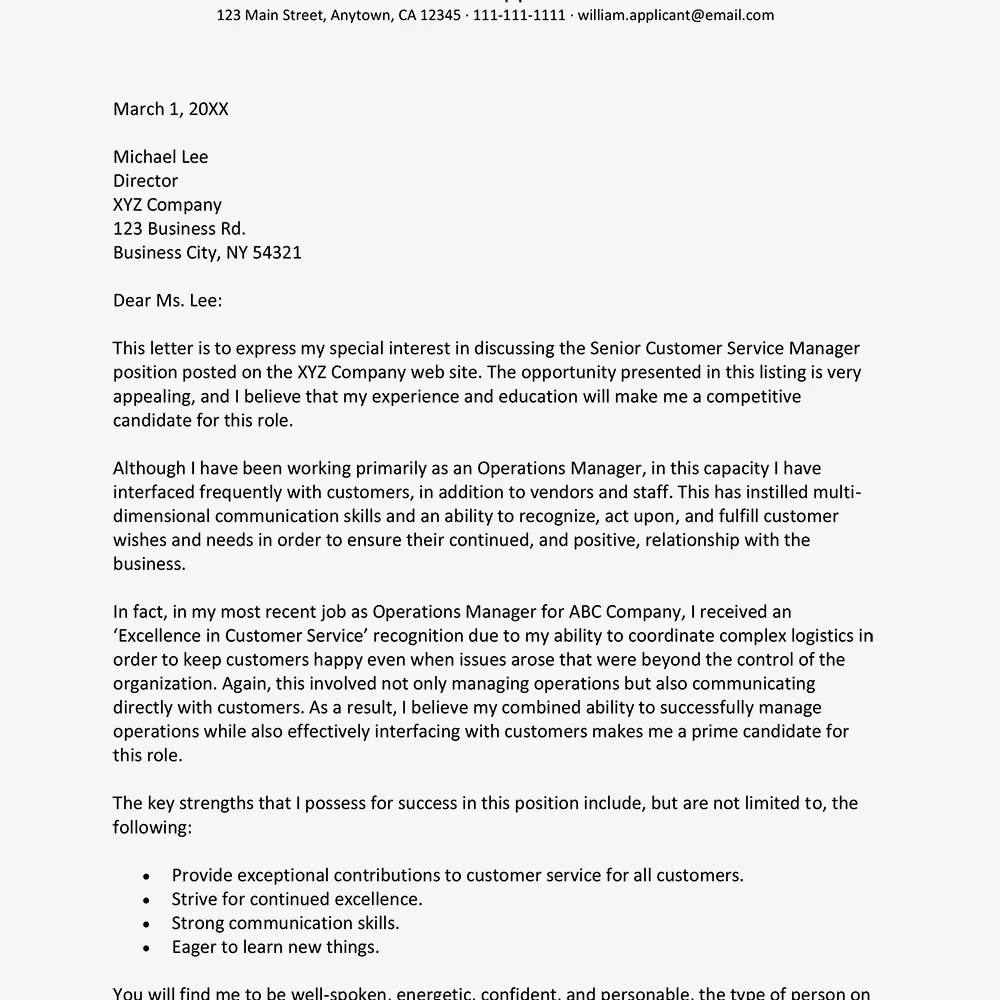Why a Strong Teacher Cover Letter Matters
In the competitive field of education, a well-crafted teacher cover letter is your first opportunity to make a lasting impression. It’s more than just a formality; it’s your chance to showcase your unique qualifications and passion for teaching. Unlike a resume, a cover letter allows you to tell your story, connecting your skills and experiences to the specific needs of the school or district. A compelling cover letter immediately grabs the attention of hiring managers and helps you stand out from other applicants. If you’re making a career change, the cover letter becomes even more critical, as it must effectively demonstrate how your previous experiences are transferable and relevant to the role of a teacher. A great cover letter significantly increases your chances of securing an interview, which is the first step toward landing your dream teaching job.
Highlighting Transferable Skills
When changing careers, identifying and highlighting your transferable skills is key. These are the skills you’ve developed in previous roles that can be applied to teaching. Consider skills like communication, leadership, organization, problem-solving, and the ability to work collaboratively. If you have experience in project management, highlight your ability to plan, execute, and evaluate projects – skills essential for curriculum development and classroom management. Sales experience can translate to the ability to engage and motivate students, while customer service skills demonstrate your ability to build relationships with parents and colleagues. When you write your cover letter, provide specific examples of how you’ve utilized these skills in the past and how they will benefit you as a teacher. Quantify your accomplishments whenever possible to further emphasize your value.
Identifying Relevant Experience
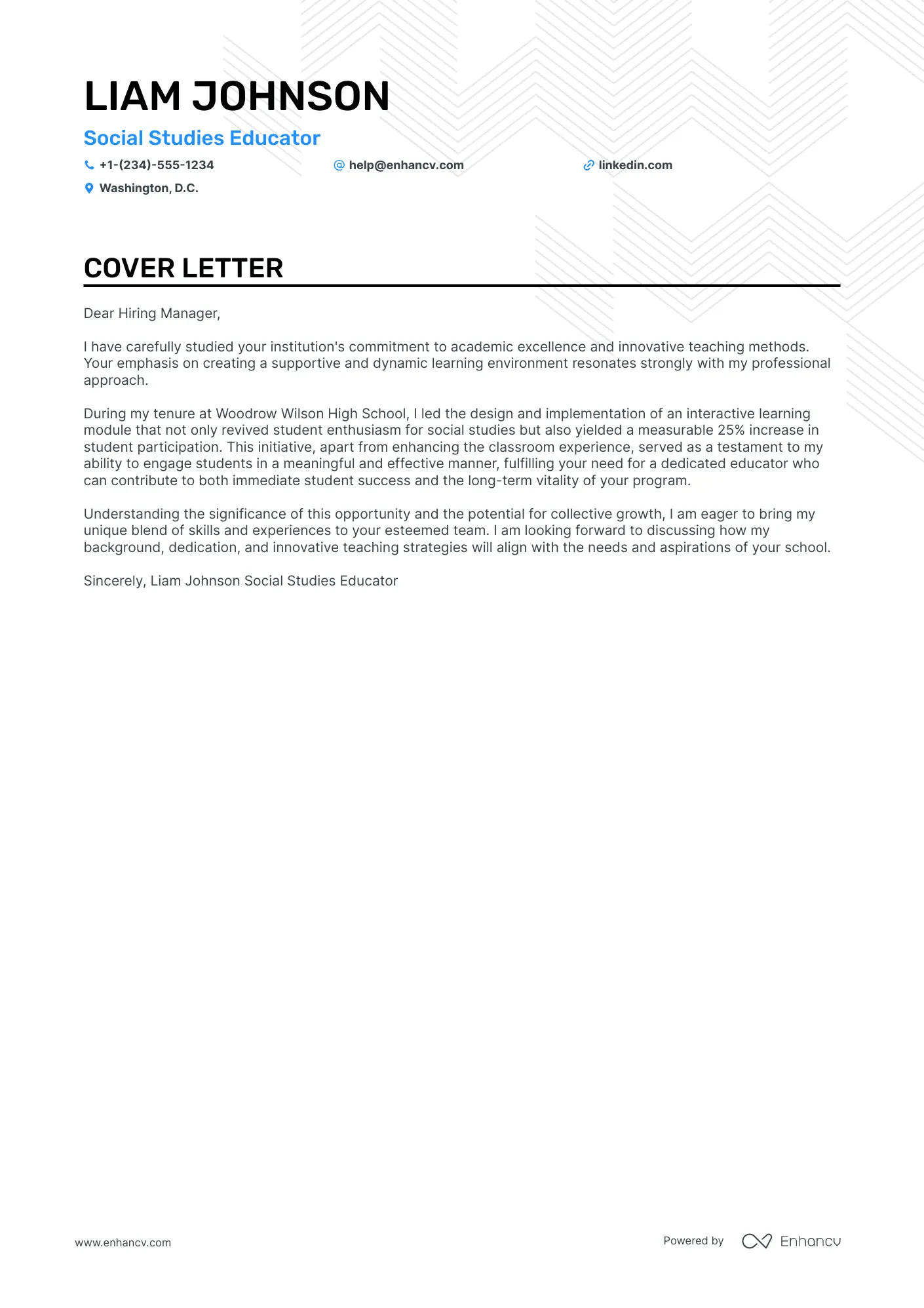
Even if your previous job wasn’t in education, you likely have experience that is relevant to teaching. Think about volunteer work, mentoring, coaching, or any activities where you’ve interacted with and guided others. If you’ve led training sessions, facilitated workshops, or presented to groups, emphasize these experiences. Any experience in public speaking, writing, or creating presentations is also valuable. The key is to frame your past experiences in a way that highlights their relevance to the teaching profession. Show how your past responsibilities have prepared you to create lesson plans, manage a classroom, and assess student progress. Use concrete examples to illustrate your abilities, such as how you resolved conflicts, improved communication within a team, or implemented a new process.
Showcasing Passion for Education
Your passion for education should shine through in your cover letter. Explain why you’re drawn to teaching and what motivates you to make a career change. Share your beliefs about education and what you hope to achieve in the classroom. If you have a specific teaching philosophy, mention it and explain how it aligns with the school’s values or mission. Talk about your enthusiasm for working with students and your commitment to creating a positive learning environment. Showing genuine excitement and dedication will help you stand out and demonstrate that you’re not just looking for a job, but that you’re committed to a career. Consider including a brief anecdote that illustrates your passion for teaching, such as a time you helped someone learn something new.
Structuring Your Cover Letter
A well-structured cover letter is easy to read and clearly communicates your message. Start with a professional header that includes your contact information. Follow this with a personalized salutation, addressing the hiring manager by name if possible. The opening paragraph should grab the reader’s attention by stating your intent and briefly highlighting your most relevant qualifications. The body paragraphs should elaborate on your skills, experience, and passion, using specific examples to support your claims. The closing paragraph should reiterate your interest, express your eagerness to interview, and thank the reader for their time and consideration. Keep it concise, typically no more than one page, and use clear, concise language to make your letter easy to understand.
Header and Contact Information
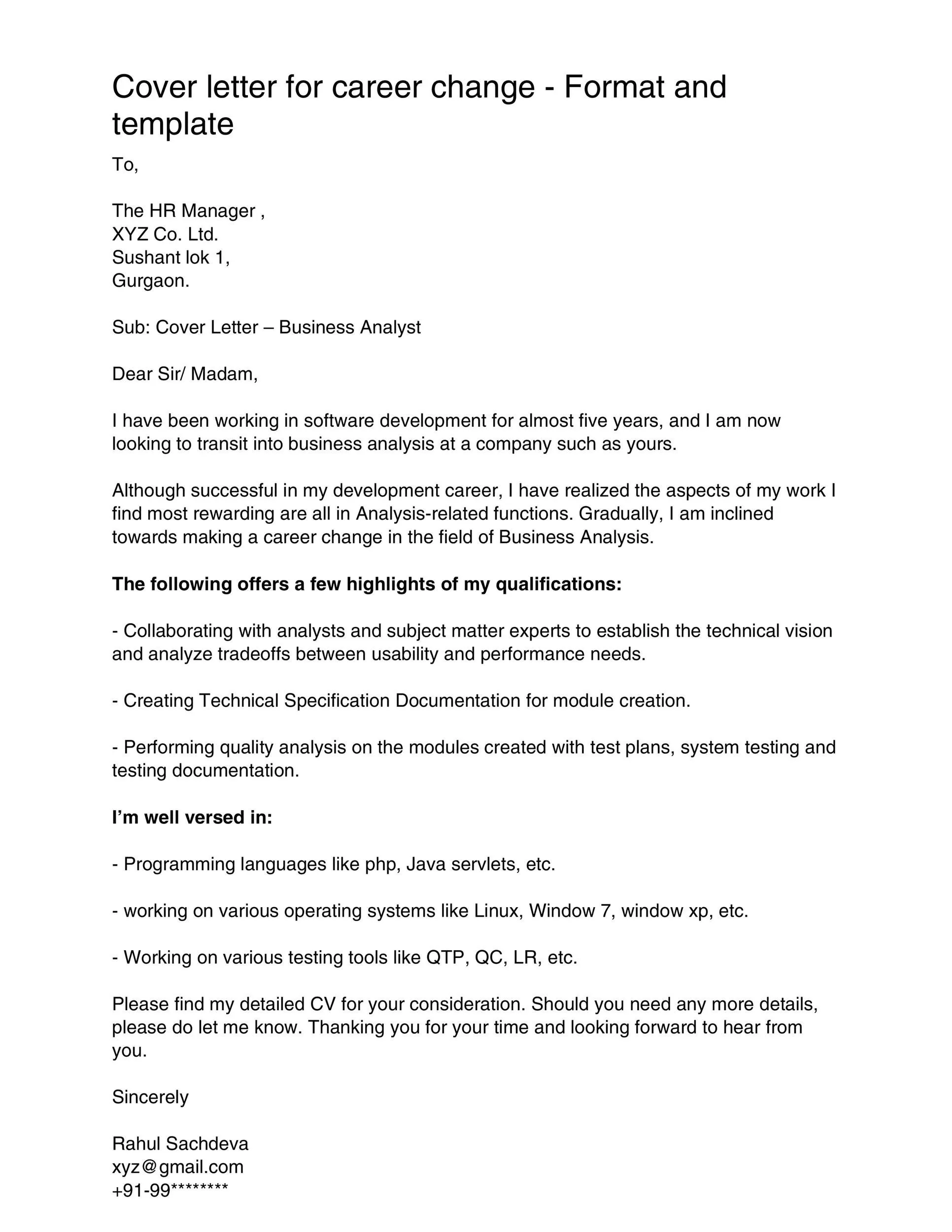
Your header should include your full name, address, phone number, and email address. Ensure that your email address is professional-sounding; avoid using nicknames or unprofessional phrases. You can also include a link to your LinkedIn profile or online portfolio if you have one. Place the header at the top of the page, either left-aligned or centered. Make sure the information is easy to read and is formatted consistently with the rest of the letter. This section allows the recruiter to quickly contact you. Double-check all the details for accuracy before submitting your application. It’s the first thing they see, so it needs to be impeccable.
The Opening Paragraph
The opening paragraph is your first chance to make a positive impression, so make it count. State the position you’re applying for and where you saw the job posting. If you’re making a career change, briefly mention your previous career and express your enthusiasm for transitioning to teaching. Highlight one or two key skills or experiences that make you a strong candidate. For example, you might mention your experience in leadership roles or your passion for working with children. Keep it brief and focused, setting the tone for the rest of your letter. The goal is to capture the reader’s attention and make them want to learn more about you. Start with a strong, confident statement to immediately engage the hiring manager.
Body Paragraphs
The body paragraphs are where you elaborate on your qualifications. Use these sections to showcase your transferable skills, relevant experiences, and passion for education. Provide specific examples to support your claims. Instead of simply stating that you have strong communication skills, describe a situation where you successfully communicated complex information to a group. If you have experience in a related field, explain how it has prepared you for teaching. Quantify your achievements whenever possible, such as the number of people you’ve mentored or the percentage by which you improved a process. Tailor each paragraph to the specific requirements of the job description, emphasizing the skills and experiences that align with the school’s needs.
Closing Your Letter
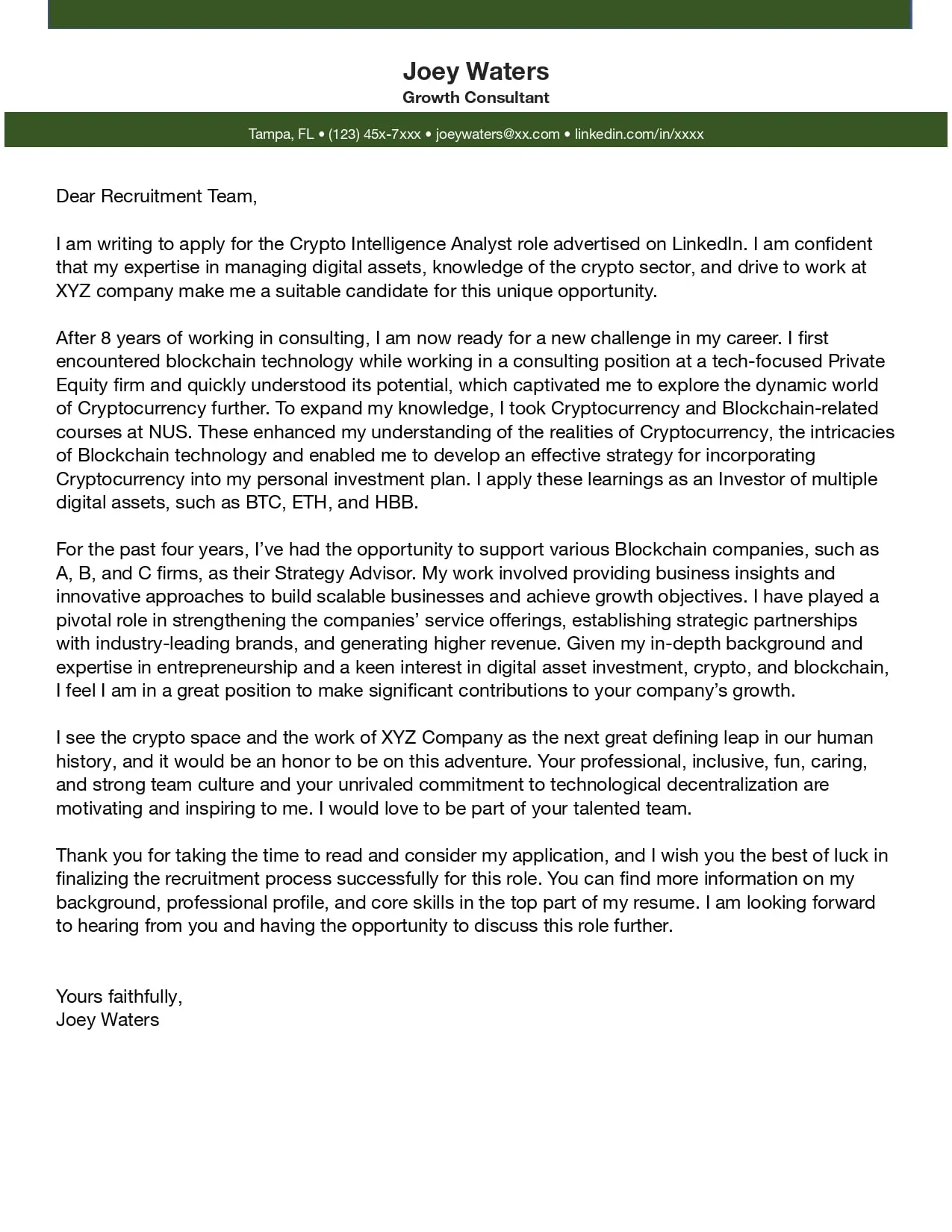
The closing paragraph should reiterate your interest in the position and express your eagerness to interview. Thank the hiring manager for their time and consideration. If you know of any specific follow-up actions, such as submitting a portfolio or providing references, mention those here. End with a professional closing, such as “Sincerely” or “Respectfully,” followed by your typed name. Proofread the entire letter one last time to ensure that there are no errors. This is your final opportunity to leave a positive impression and increase your chances of getting the job. It should be concise, confident, and leave the reader with a strong sense of your potential.
Tailoring Your Letter
Generic cover letters are unlikely to impress. Tailor each cover letter to the specific job and school. Carefully read the job description and identify the key skills and qualifications the school is seeking. Highlight these skills and experiences in your letter, providing specific examples to demonstrate your abilities. Research the school’s mission, values, and programs. If possible, address any specific needs or challenges the school is facing. Show how your skills and experiences align with the school’s goals. By tailoring your letter, you demonstrate your genuine interest in the school and your understanding of their specific needs. This shows you’ve put in the effort to understand the school and its requirements, rather than just sending out a mass application.
Researching the School
Before writing your cover letter, research the school you are applying to. Visit the school’s website to learn about their mission, values, and academic programs. Check out their social media pages to get a sense of the school culture. If possible, speak to current teachers, parents, or students to learn more about the school community. Researching the school helps you tailor your letter to the specific needs and values of the school. It also demonstrates your genuine interest in the position. By showing that you’ve taken the time to learn about the school, you can demonstrate how your skills and experiences align with their goals. This can make your cover letter stand out and increase your chances of getting an interview.
Addressing Specific Needs
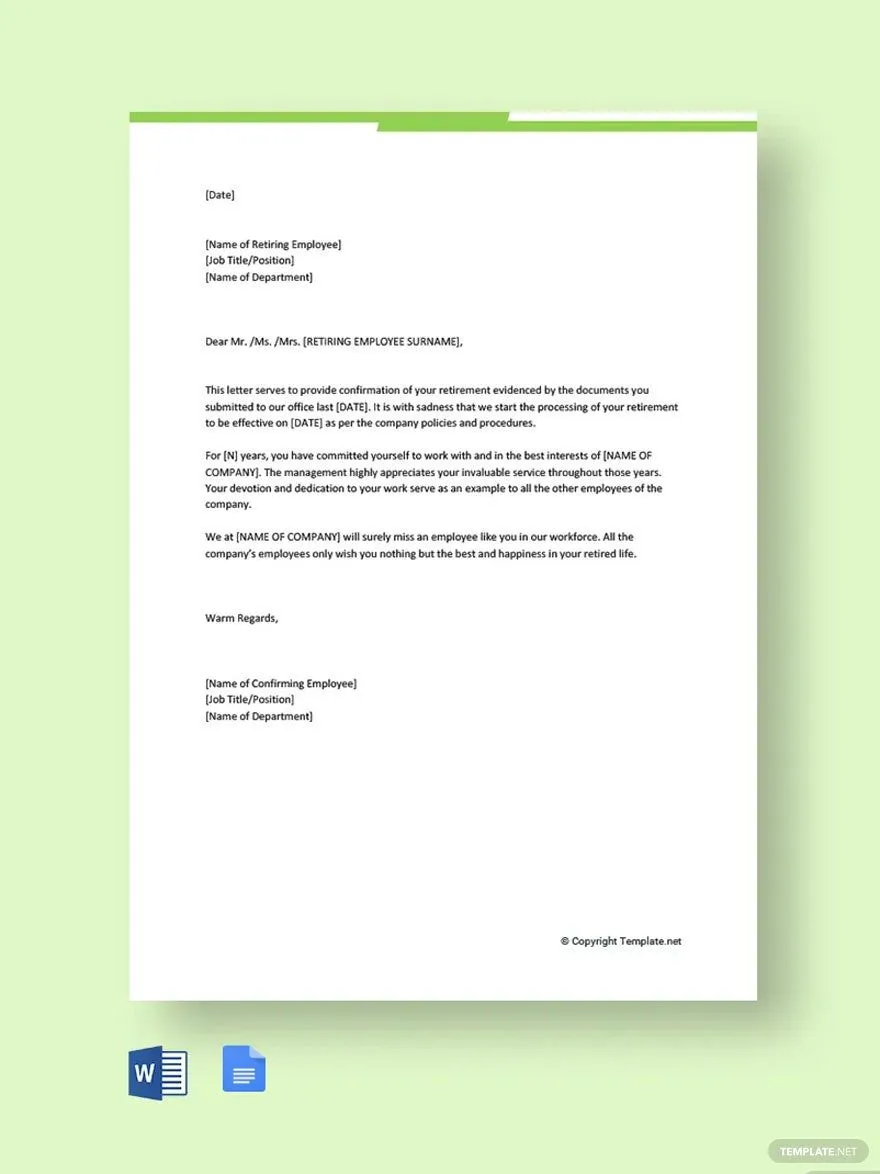
If the job description mentions specific needs or challenges, address them in your cover letter. For example, if the school is implementing a new technology program, highlight your experience with relevant technologies. If the school is seeking to improve student engagement, discuss your ability to create engaging lesson plans. Show how your skills and experiences can help the school address these specific needs. This shows that you have a good understanding of the school’s requirements and that you are prepared to contribute to their success. Demonstrate how you can be part of the solution by showcasing your proactive approach to problem-solving, addressing any potential concerns the hiring manager might have.
Proofreading and Editing
Proofreading and editing are crucial steps to ensure your cover letter is polished and professional. Carefully review your letter for any grammatical errors, spelling mistakes, and typos. Read the letter aloud to catch any awkward phrasing or sentences. Ask a friend, family member, or career advisor to review your letter as well. A fresh pair of eyes can often catch mistakes that you might have missed. Pay close attention to the formatting, ensuring that it is consistent and easy to read. A well-proofread cover letter demonstrates your attention to detail and professionalism, which are essential qualities for a teacher. Errors and typos can create a negative impression, so it is always best to be meticulous.
Formatting for Impact
Effective formatting makes your cover letter visually appealing and easy to read. Use a standard font such as Times New Roman, Arial, or Calibri. Keep the font size between 10 and 12 points. Use clear and concise language, avoiding overly complex sentences and jargon. Use bullet points to highlight your key skills and accomplishments. Use white space to separate the sections and make the letter less cluttered. Keep the letter to one page. The overall goal is to present your information in a way that is easy for the reader to process and understand. A well-formatted cover letter is professional and shows that you are detail-oriented. Formatting creates a visual hierarchy, guiding the reader through the most important information quickly.
Common Mistakes to Avoid
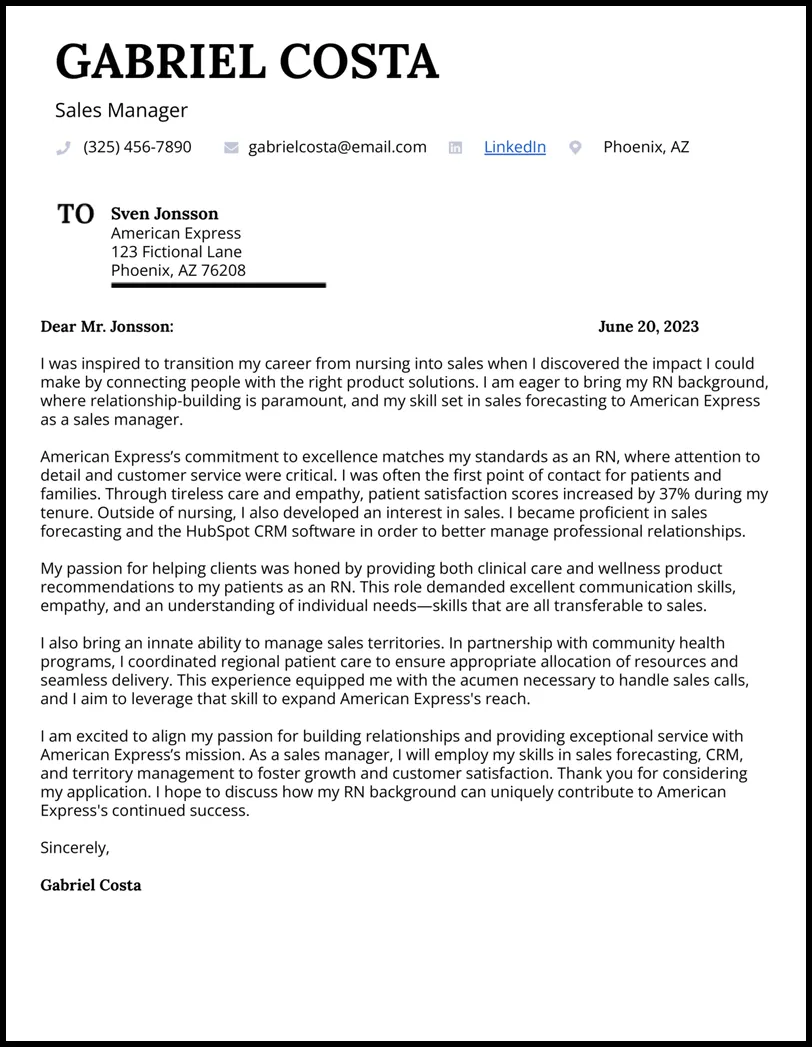
Avoid common mistakes that can negatively impact your cover letter. Do not simply restate your resume; use the cover letter to tell your story and provide additional context. Avoid using generic language or clichés. Do not include irrelevant information or personal details. Avoid grammatical errors and typos. Do not make negative statements about your previous employers or jobs. Do not exceed one page. By avoiding these common mistakes, you increase the chances of making a positive impression and securing an interview. It demonstrates your professionalism and attention to detail, which are crucial in the teaching profession.
